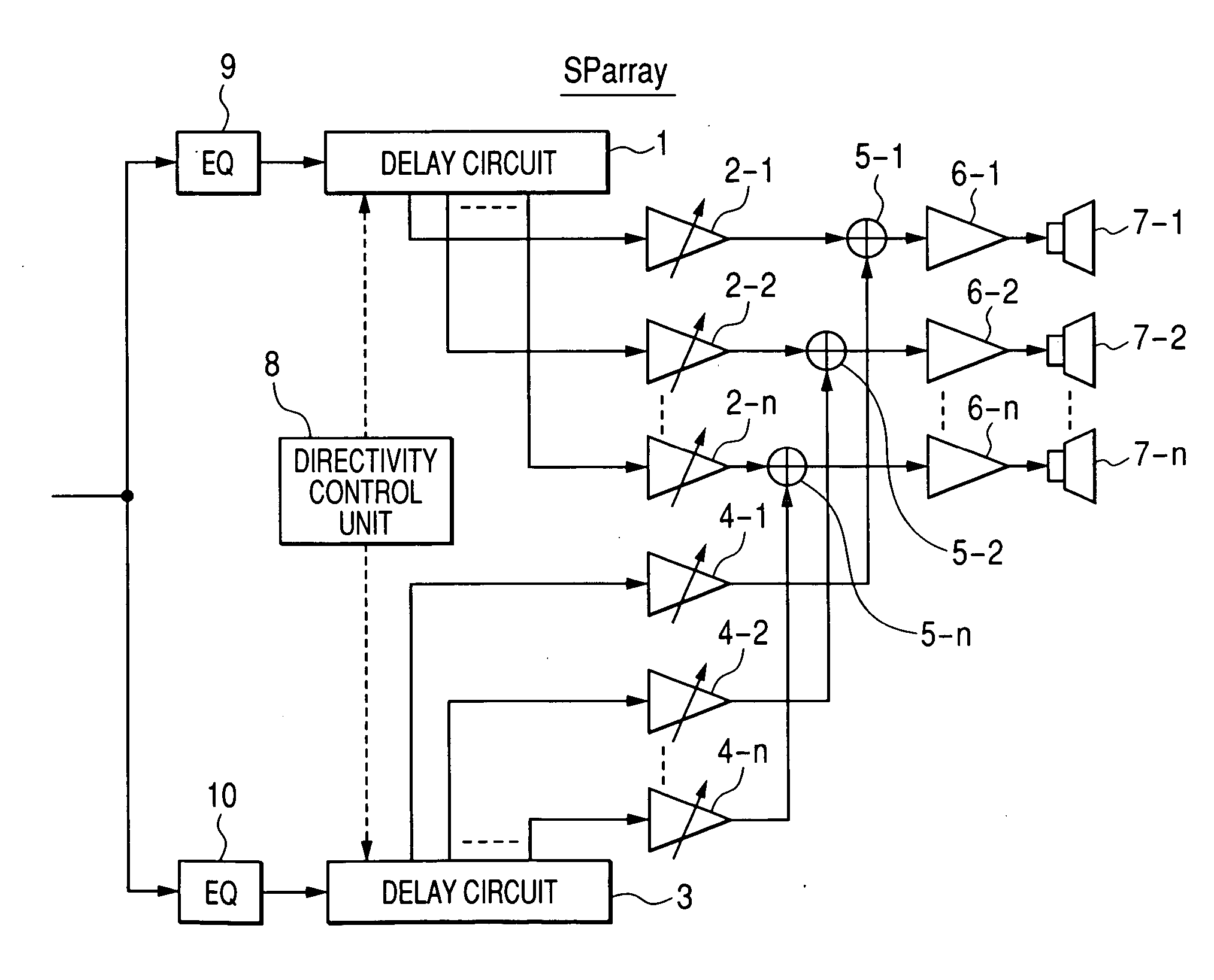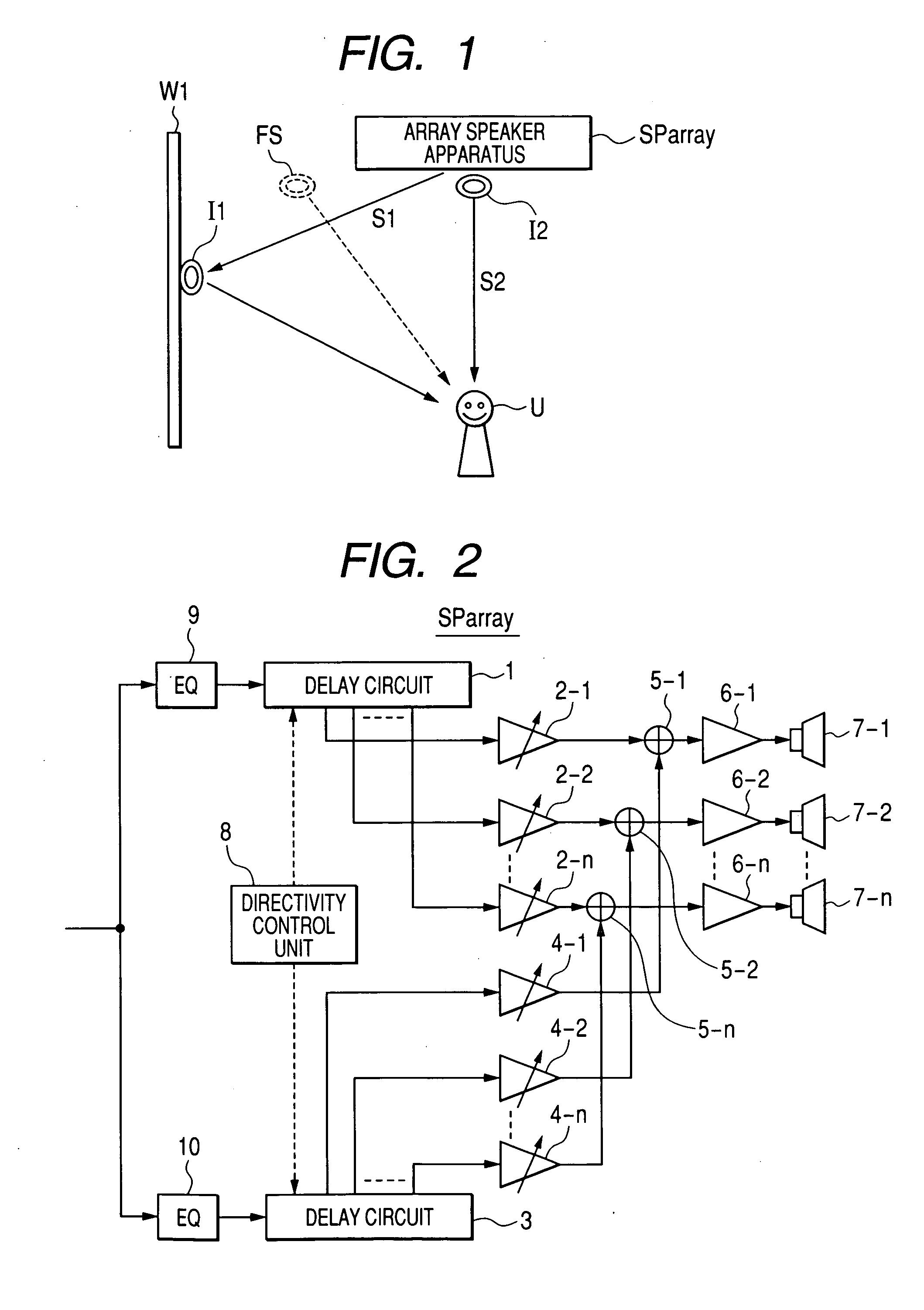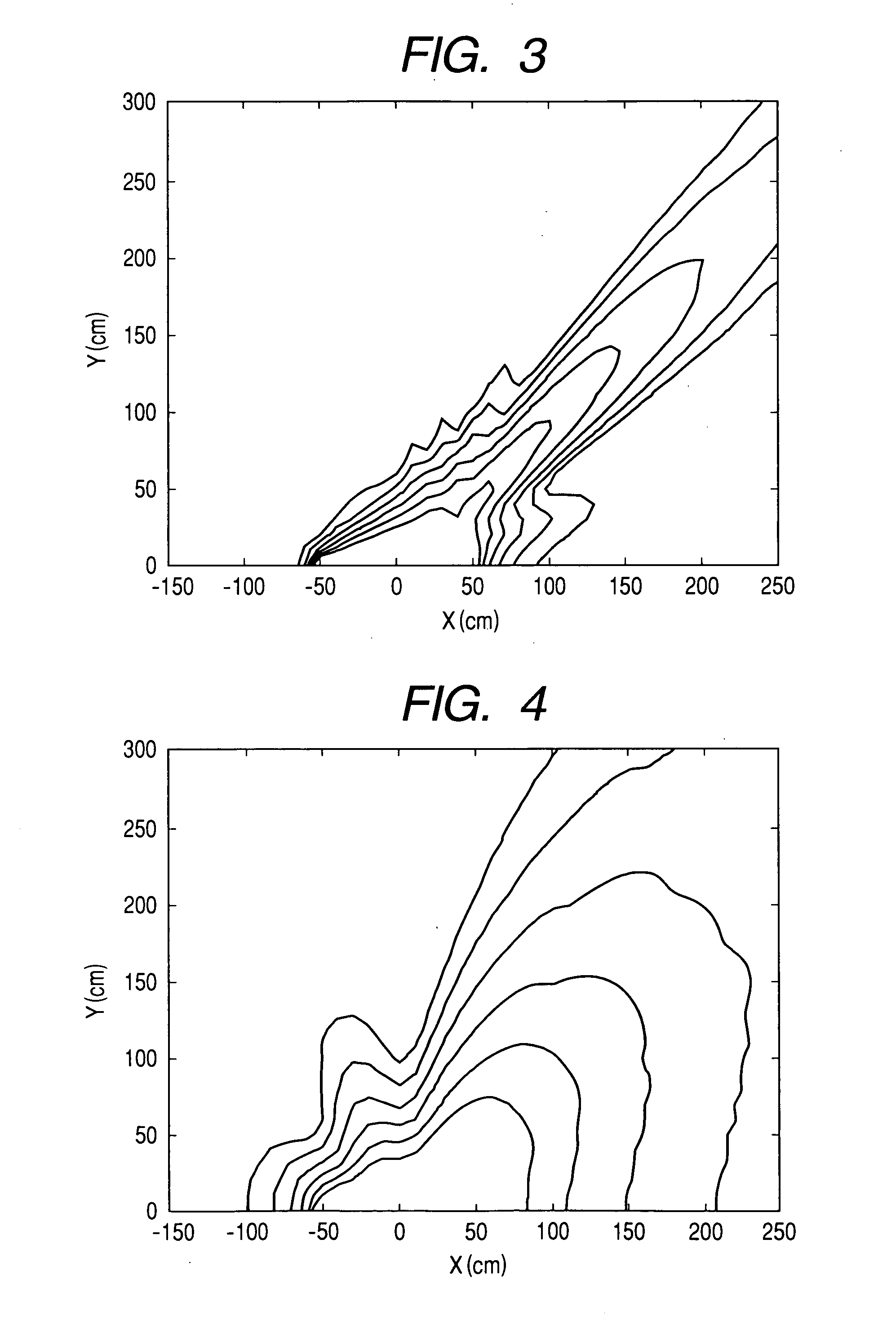Array speaker apparatus
a speaker and array technology, applied in the field of array speaker equipment, can solve the problems of short speaker line of rear speakers sp-sl and sp-sr, wrong sound image fixed position of main channels (main signals l and r), and poor sound quality
- Summary
- Abstract
- Description
- Claims
- Application Information
AI Technical Summary
Benefits of technology
Problems solved by technology
Method used
Image
Examples
first embodiment
[0065] An embodiment of the present invention will be described below in detail with reference to the drawings. An array speaker apparatus SParray according to a first embodiment is constituted by a first audio signal generating circuit for generating first audio signals to be radiated to a wall surface W1 on the left or right side of a listening position U based on an input audio signal of one channel of main channels (main signals L and R), a second audio signal generating circuit for generating second audio signals to be radiated directly to the listening position U based on the input audio signal, adders for adding the first audio signals to the second audio signals, and amplifiers for amplifying the outputs of the adders, speaker units to be driven by the amplifiers, and a directivity control circuit constituted by a microcomputer or the like for deciding the directivities of the first audio signals and the second audio signals.
[0066] This array speaker apparatus SParray can b...
second embodiment
[0085] Next, description will be made about a second embodiment of the present invention. Prior to the description of the second embodiment, description will be made about a change of a beam shape due to a frequency band. When the array speaker width and the set focus are fixed, the higher the frequency is, the acuter the beam is. Each of FIGS. 3 and 4 is a graph showing a simulated example of directivity distribution when a focus was set in the direction of 45° in a background-art array speaker apparatus 95 cm wide. Each of FIGS. 3 and 4 shows contours of sound pressure levels of a single frequency on an XY plane, showing sound pressure levels when a plurality of speaker units were disposed in the X-axis direction around the position of 0 cm in the X axis. The example of FIG. 3 shows a simulated result of a sine wave of 2 kHz, and the example of FIG. 4 shows a simulated result of a sine wave of 500 Hz.
[0086] The directivity of a low frequency band is not as acute as that of a high...
third embodiment
[0109] Next, description will be made about a third embodiment of the present invention. As described in the second embodiment, the directivity of the low frequency band is not as acute as that of the high frequency band. Therefore, there is a small difference between the sound pressure energy in the radiation direction and the sound pressure energy in the frontal direction of the array speaker apparatus. On the contrary, the sound pressure of the high frequency band is attenuated suddenly in a position out of the beam center. Accordingly, a range where a frequency balance with the low frequency band is good is narrow. That is, an area where good listening can be secured is narrow. A sound closer to a natural sound and better in frequency balance has a better sense of fixed position. To this end, this embodiment is to correct a difference in directivity shape between frequency bands.
[0110] As shown in FIGS. 3 and 4, 2 kHz has much stronger directivity than 500 Hz. Here, FIG. 8 show...
PUM
 Login to View More
Login to View More Abstract
Description
Claims
Application Information
 Login to View More
Login to View More - R&D
- Intellectual Property
- Life Sciences
- Materials
- Tech Scout
- Unparalleled Data Quality
- Higher Quality Content
- 60% Fewer Hallucinations
Browse by: Latest US Patents, China's latest patents, Technical Efficacy Thesaurus, Application Domain, Technology Topic, Popular Technical Reports.
© 2025 PatSnap. All rights reserved.Legal|Privacy policy|Modern Slavery Act Transparency Statement|Sitemap|About US| Contact US: help@patsnap.com



